Adding a pond to your garden can completely change the look and feel of the space.
Whether you have a small courtyard or a large lawn, the right landscaping around your pond can make it feel more natural and inviting. From planting choices to seating areas, there are plenty of ways to make your pond stand out and become a feature you enjoy all year round.
In this guide, we’ll share practical pond landscaping ideas to inspire you, along with tips on how to create a setting that suits your garden’s size and style.
Incorporating Water Features
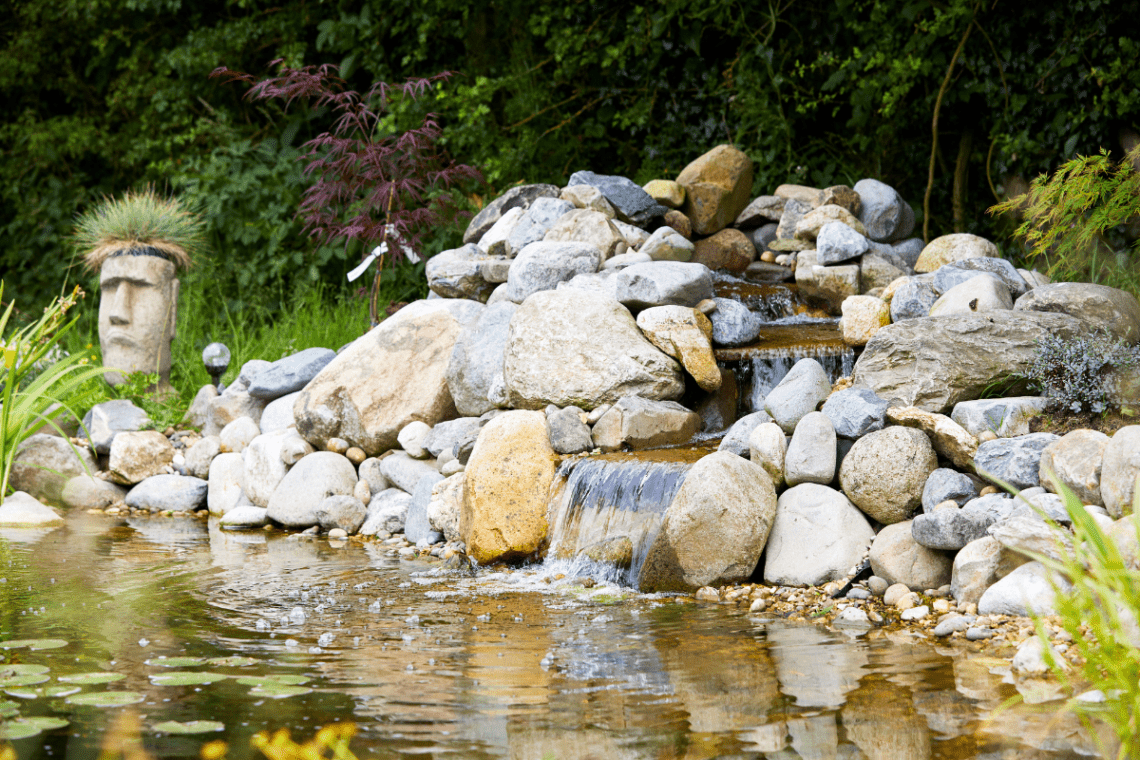
Adding extra water features to your pond can bring movement, sound, and character to the space. A simple fountain, bubbling rock, or small waterfall can make your pond feel more alive and create a relaxing backdrop in the garden. These features also help keep the water moving, which can improve its quality and make the pond more enjoyable to watch and listen to.
1. Adding a Waterfall or Fountain
There’s something special about the sound of running water in a garden. A waterfall instantly makes a pond feel more alive while also helping to keep the water fresh and full of oxygen. Birds and other wildlife are often drawn to the movement, which adds even more interest to your garden.
Think about the size of your pond when choosing a waterfall. A small pond might suit a gentle trickle that creates a soft background sound, while a larger pond can handle a more dramatic drop with a louder splash.
Fountains are another great option. They come in all sorts of styles, from classic tiered designs to sleek modern sprays. Aside from looking good, they also keep the water moving, which helps reduce algae and keeps everything healthier.
Top Tip: For more inspiration, see our article on waterfalls and aeration in ponds, which explains how to keep your pond healthy while adding sound and visual appeal.
2. Using Garden Ponds as Centrepieces
A well-placed pond can become the heart of your garden. By positioning it in a spot where you can build seating or a patio around it, you’ll always have somewhere to relax and enjoy the view.
Add a simple feature like a water wheel or a gentle waterfall, and it quickly becomes the feature everyone notices when they step into your garden.
Don’t forget the edges. A natural-looking finish with pond plants like water lilies, irises, or ornamental grasses will soften the borders and bring colour through the seasons. This not only makes the pond look part of the garden but also highlights it as the main focal point.
Selecting Aquatic Plants
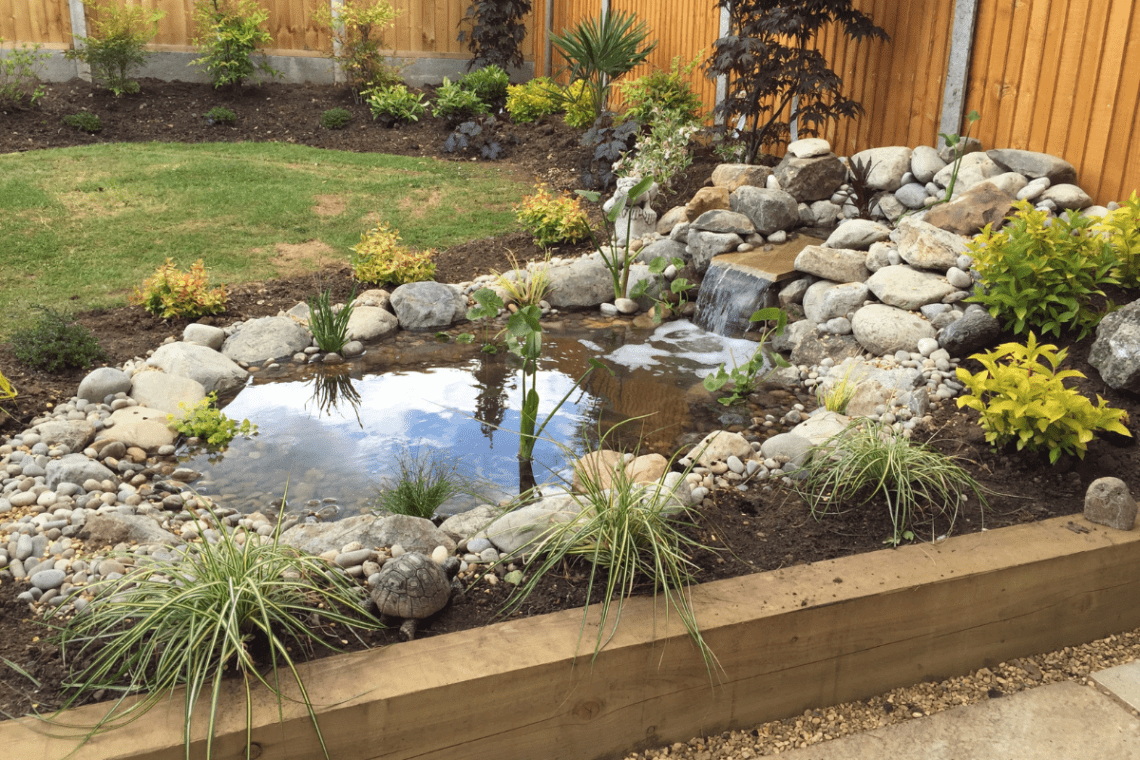
The plants you choose for your pond make a big difference to how it looks and how well it thrives. Aquatic plants bring colour, texture, and life to the water while also helping to keep it balanced and healthy.
3. Creating a Balanced Ecosystem
The right mix of pond plants will keep your pond healthy, oxygenated, and welcoming to wildlife. Each type of plant plays its own role in maintaining balance:
- Floating plants: e.g. water lilies, provide shade, reduce algae, and help control water temperature.
- Marginal plants: such as flowering rush or ornamental grasses, grow around the edges and offer shelter for small creatures.
- Submerged plants: work under the surface to supply oxygen and break down waste, keeping the water clean.
- Native plants: usually easier to maintain and great for supporting local wildlife.
Top tip: Match your planting to the garden pond depth. Koi ponds need deeper water, while small wildlife ponds can thrive in just a few square metres.
4. Plant Placement Strategies
The way you arrange plants around your pond is just as important as the types you choose. Taller marginals like irises work well at the edges, creating a natural link between water and land.
Floating plants such as water lilies look best spread across the surface, adding colour while shading the water. Beneath it all, submerged water plants quietly supply oxygen and keep things balanced.
Sunlight matters too. Shade-loving plants are best placed under trees or along cooler edges, while lilies and other sun-lovers need full light to thrive. With thoughtful placement, your pond will look natural, stay healthy, and be easier to care for.
Using a quality pond liner ensures your plant arrangements stay in place and helps prevent water loss. If you’re unsure, our guide on what to put in the bottom of a pond has helpful advice for getting started.
Designing a Pond That Looks Good and Works Well
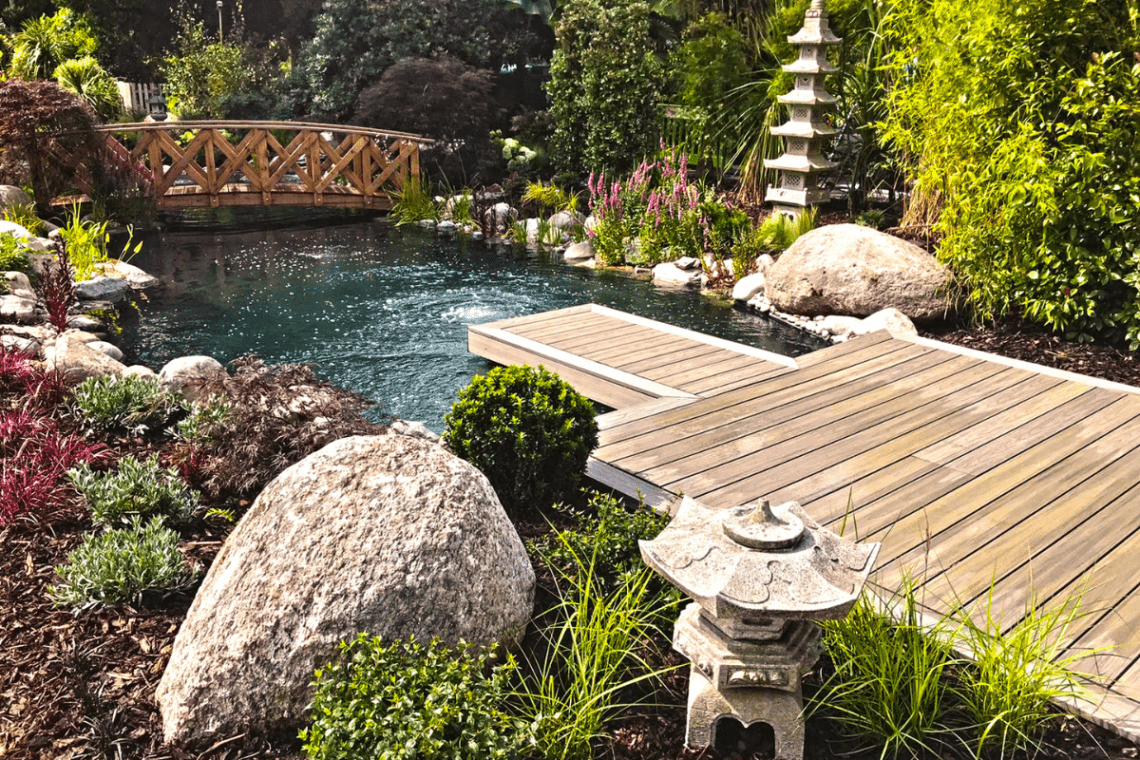
A pond should be more than a water feature you glance at — it can be both beautiful to look at and practical to maintain. From the plants you choose to the seating around it, small design choices can make the pond a space you enjoy every day while also keeping it healthy and easy to care for.
If you’re just starting to plan your project, our free pond design guide is a great place to begin. It’s packed with ideas and practical tips to help you choose the right style, plants, and features for your garden.
5. Adding Creative Design Features
Little details can make a big difference to how your pond feels. Stepping stones or a small bridge not only look attractive but also give you new ways to enjoy the view from different angles.
Adding a rockery around your pond can enhance its natural look and provide habitats for small creatures.
A simple wooden bridge, or even one with a Japanese-inspired style, can add character and make the pond feel like a real feature of the garden.
6. Making Your Pond Accessible and Safe
Good design isn’t just about looks — it should also make your pond easy and safe to enjoy. Simple additions can improve access and create a more welcoming space:
- Paved paths or edging: provide safer footing, especially in wet weather. Paved areas can be made using gravel, concrete, or bricks, adding structure and preventing a muddy garden path.
- Decking: offers a level, slip-resistant surface for easy access to the pond.
- Seating areas: give you a comfortable spot to relax and enjoy the view.
- Safety barriers: low edging or fencing can help protect children and visitors.
- Container ponds: a great option for patios or for those with limited mobility.
These small touches make your pond more practical while keeping it enjoyable for everyone.
7. Using Lighting to Illuminate Your Pond
Lighting is another functional feature that enhances accessibility. Lights around a pond not only highlight its beauty in the evening but also improve safety after dark. For energy-efficient, long-lasting pond illumination, consider using LED lights. Use solar lights for an eco-friendly option that blends well with garden surroundings.
8. Building a Swimming Pond
Swimming ponds are a brilliant way to enjoy the feel of wild swimming, right in your own garden. Unlike a traditional pool, it uses plants, natural processes, and clever filtration systems like the Michael Wheat System to keep the water clean, so you can take a dip in crystal-clear water without harsh chemicals.
The design usually includes two zones: one for swimming and another for regeneration, where plants filter and refresh the water. Marginal plants around the edges not only help with purification but also make the pond look like a natural part of the garden. A reed bed can also be included in the regeneration zone to naturally filter and purify the water.
The result is more than just somewhere to cool off in summer. A swimming pond becomes a year-round feature — a beautiful water garden that supports wildlife while also giving you a unique and refreshing place to swim.
Want to explore more? We’ve written about different types of swimming ponds and how each one can suit a different lifestyle or garden design.
9. Matching Your Pond to Your Garden Style
A pond should feel like it belongs in your garden, not just placed there. The best designs reflect the style of the space around them.
If your garden has a formal look with neat hedges, ornaments, or even a gazebo, a structured pond or raised pond with a fountain or classic water feature will fit right in. For a more relaxed, country-style garden, a natural pond works beautifully, especially when planted with native species that attract wildlife.
If you prefer a calming, Zen-inspired space, a koi pond can be a stunning choice. Add touches like lily pads, a small wooden bridge, or stone paving, and you’ll have a garden feature that feels peaceful and inviting all year round.
Planning Your Pond Landscape
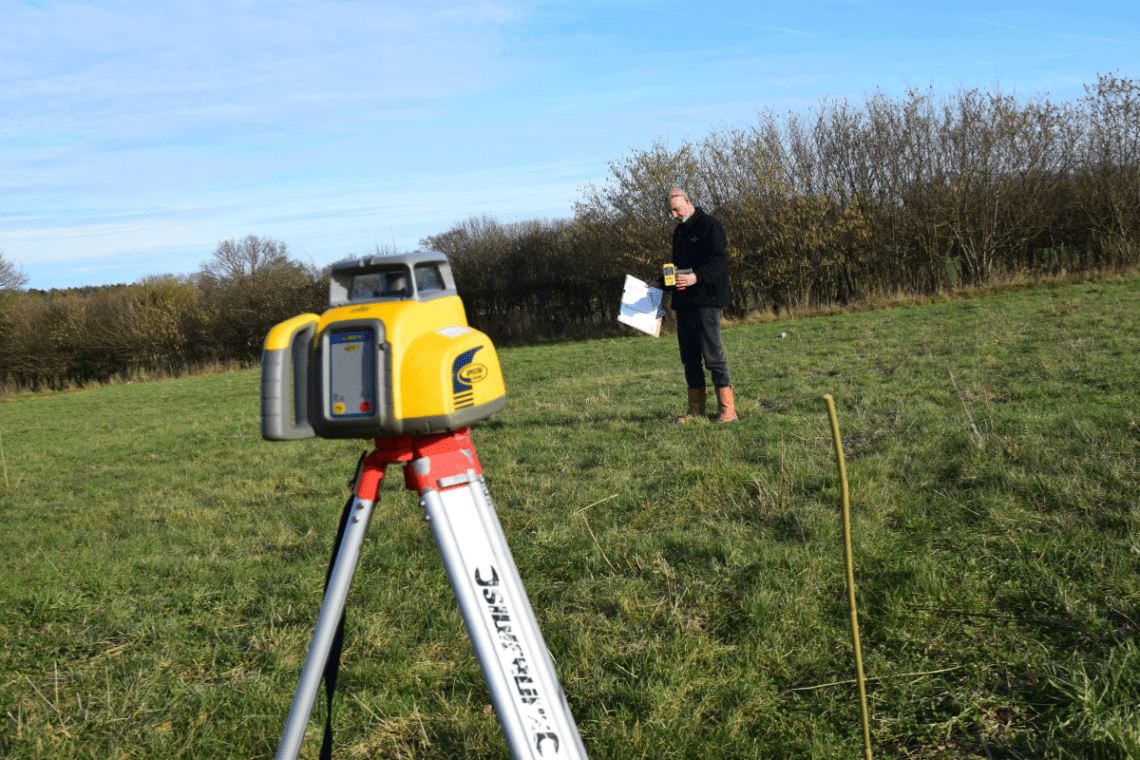
Getting the design right from the start makes all the difference to how much you’ll enjoy your pond later. It’s about finding the right spot, deciding on the best size and shape, and making sure it works with the rest of your garden.
Assessing Space and Positioning
Take a good look at your garden layout before choosing where the pond should go. A sunny spot is ideal for plants like lilies, while placing them under trees often means constant leaf cleanup.
If your chosen spot is shaded, incorporating shade plants around the pond will help it thrive.
Try to position the pond where you can see it from the house or patio, that way you’ll enjoy it even when you’re indoors. Think too about where you’ll sit to watch the water and whether the spot is easy to reach for maintenance.
Choosing the Right Pond Size and Shape
The size and shape of your backyard pond will affect how it looks, how much work it needs, and what kind of plants and wildlife it can support. Some key things to consider:
- Small ponds: easier to maintain but limited in the number of plants and fish they can support.
- Raised ponds: add character, make maintenance simpler, and help keep pets or small animals out.
- Natural-style ponds: with irregular shapes and natural materials, they blend well into wildlife gardens and attract more biodiversity.
- Formal ponds: with neat, geometric shapes, suit modern formal gardens and structured outdoor spaces. They are especially well-suited to a formal garden setting.
Bringing Your Pond Design Ideas to Life
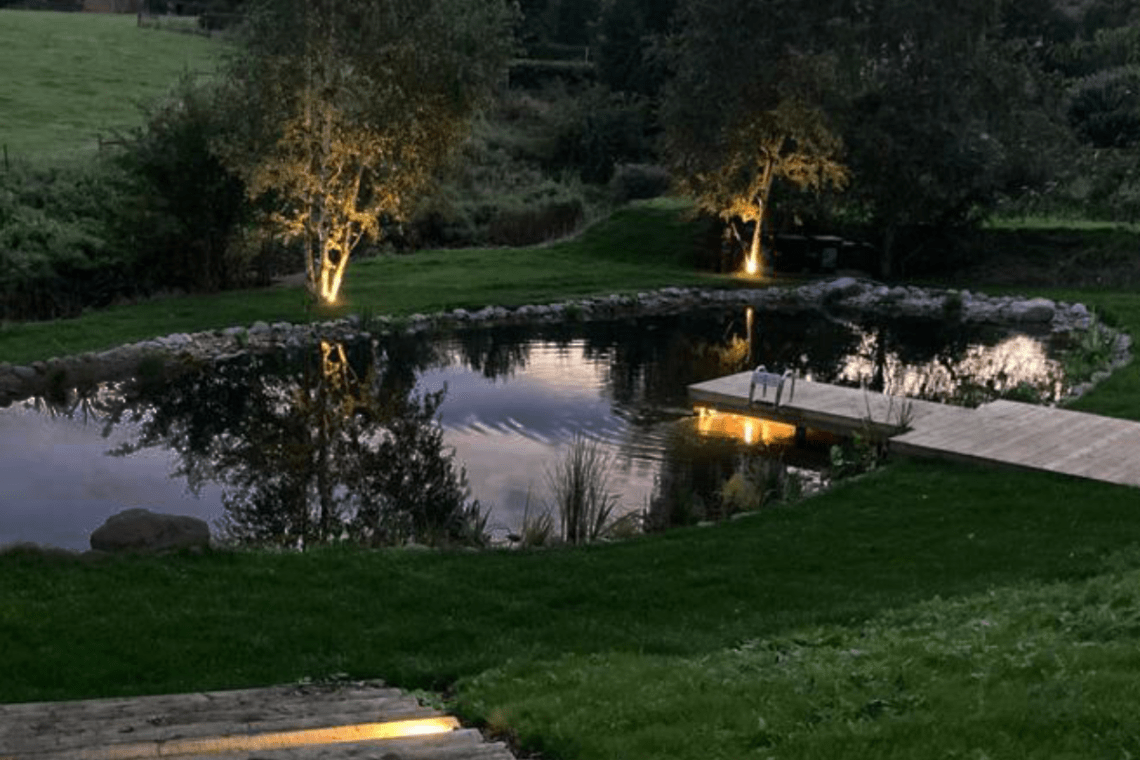
A well-designed pond can completely transform a garden, whether you’re looking for a peaceful spot to relax, a space that supports wildlife, or even a natural swimming pond for the whole family to enjoy.
At Ponds by Michael Wheat, we specialise in creating ponds that are not only beautiful but also built to last. From wildlife ponds to bespoke swim ponds, our team will guide you through the design and construction process to bring your pond ideas to life.
Ready to start planning your dream pond? Get in touch with us today, and let’s turn your garden into something truly special.